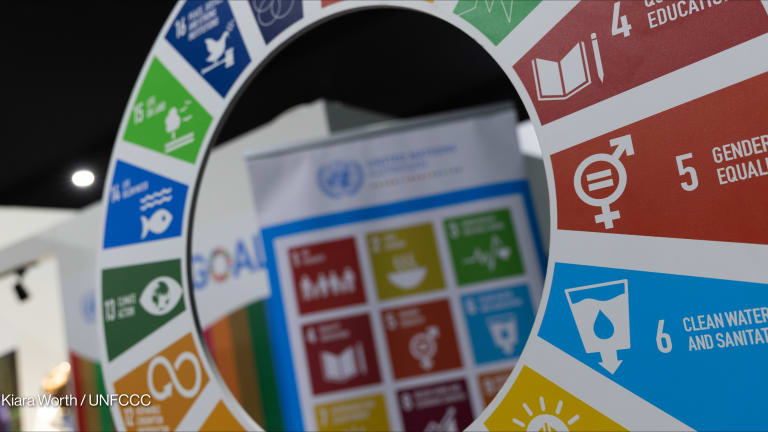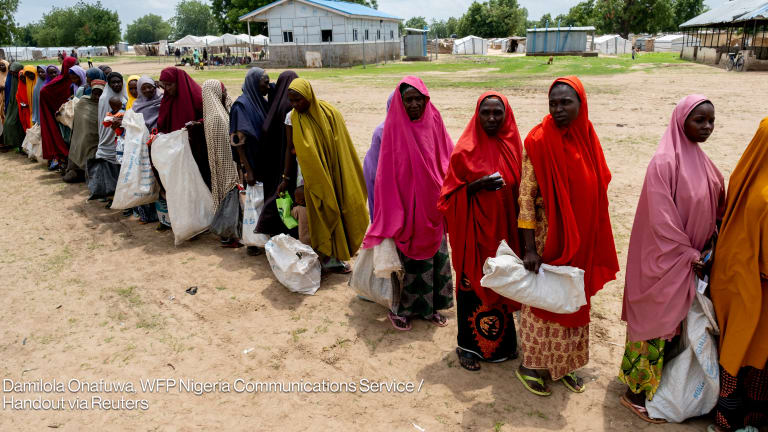How machine learning and new data sources can better target aid
The Center for Effective Global Action featured its work in, and learnings from Togo, in a recent event on reimagining development aid, which focused on how to leverage emerging technology to improve targeting.
Since the start of the COVID-19 pandemic, over $1 trillion in cash payments have gone to more than 1.5 billion people, more than one-fifth of the global population. Governments trying to provide assistance to their citizens, many of whom lost their livelihoods due to lockdowns and other measures to stop the spread of the virus, have faced difficult decisions, including “who should be eligible for the limited resources that exist,” said Joshua Blumenstock, associate professor at the University of California, Berkeley and faculty co-director of the Center for Effective Global Action, or CEGA, an international development research hub that tests poverty reduction efforts. Those decisions require data. And when policymakers have limited, outdated, or unreliable data, they have a hard time determining who should get aid, let alone what type of support to provide, when to offer it, and how to reach recipients. The pandemic highlighted the shortcomings of many traditional approaches to delivering humanitarian assistance — as well as the promise of emerging technologies such as machine learning to target those who need it most. That was the focus of CEGA’s annual Evidence to Action event last week, which focused on improving the targeting of development aid, a focus of its Targeting Aid Better initiative. Big data analytics can inform efforts to identify who needs aid before a crisis strikes, take a data-driven approach to designing social safety nets, or provide emergency aid to people affected by crisis — from the pandemic to the increasing threats posed by climate change. Given the challenges of ground data collection during the pandemic, a growing number of efforts worldwide are using machine learning to process satellite imagery, mobile phone data, and other information sources to identify who should be prioritized for humanitarian aid. Togo has become a pioneer in precision aid. The government’s Novissi platform for emergency cash transfers combines geospatial analytics, mobile phone metadata, and machine learning to prioritize assistance for its poorest citizens. In its first phase, which launched in April 2020, a week after the president declared a state of health emergency, Novissi used voter ID information to target people working in informal occupations in urban areas who were unable to work due to lockdown measures. But with financial support from GiveDirectly, a nonprofit that makes unconditional cash transfers via mobile phone, and in collaboration with CEGA researchers, Togo expanded Novissi to rural areas. Half of Togo’s population lives in extreme poverty. Eighty percent of the population works in the informal sector in jobs that cannot be done from home, making them particularly vulnerable to the economic impacts of the pandemic. Through Novissi, Togo has distributed $34 million to 920,000 people, or one-quarter of its adult population. “Social protection programs are often difficult to implement for governments, due to a lack of reliable data, and the associated difficulty of targeting the design and delivery of these programs,” Cina Lawson, Togo’s minister of digital economy and transformation, said at the CEGA event Thursday. “In the second phase, we turned to innovative, high-tech methods to improve targeting of the most vulnerable people.” Togo did not have comprehensive survey data on which villages were the poorest. And these challenges are not unique to Togo — in fact, only half of the world’s low-income countries have completed a census in the past ten years. Working in close partnership with Togo’s government, CEGA researchers used satellite imagery to select the poorest geographies, then used mobile phone data to select the poorest individuals. The work built on a growing body of research demonstrating that satellite imagery can be predictive of poverty, said Emily Aiken, a doctoral student at the UC Berkeley School of Information who worked on Novissi. “Satellite tiles contain a lot of information about really spatially granular poverty,” she said. “There’s information about the quality of roof materials of houses in the village, information about road density and road quality, there’s information about forest cover and access to water, and all this other really rich information related to poverty is in these images if we only were able to extract it.” That’s where machine learning comes in, Aiken said. The technology recognizes patterns from underlying data. The CEGA team used algorithms to identify the 100 poorest cantons, or provinces. But Novissi could only afford to pay 29% of the national population, so CEGA turned to mobile phone data to select individual beneficiaries. “The sort of key intuition here is that people who are wealthy use their phones differently than people who are poor,” Aiken said. “They might make more transactions, use more mobile money, make more international calls, or use more mobile data.” CEGA researchers were able to access all mobile network data from Togo’s two mobile network operators for the six months leading up to the start of the Novissi program. They used algorithms to generate poverty scores from the dataset. Then CEGA created poverty scores for every mobile phone subscriber in Togo, which was used for targeting aid. A key question for CEGA, in Togo and other contexts, is how these alternative methods compare to ground truth data. In Togo, CEGA conducted a phone survey of 10,000 people that concluded that using mobile phone metadata to target aid was more effective than making decisions based on occupation or geography — but not as effective as having comprehensive poverty data, such as a social registry. Blumenstock told Devex a big part of Novissi’s success is the government’s commitment to a rigorous scientific evaluation of the platform. “This commitment made it possible to transparently document the strengths and weaknesses of this novel approach to targeting aid,” he said in an email. CEGA plans to create materials that will make it easier for other governments and humanitarian organizations to adapt this approach to other contexts, Blumenstock added. In her remarks last week, Lawson encouraged more governments to consider how they can use big data and big data analytics for more efficient targeting of aid. But Aiken of CEGA highlighted several factors that should be considered when replicating this work elsewhere. One is the possibility of digital exclusion. In Togo, 85% of households have access to a phone, 65% of individuals own a phone, and in rural areas, just 43% of individuals own a phone. One way Togo tried to avoid digital exclusion was by tying the Novissi program to sim cards, not mobile phones so that even someone without a phone could buy a sim card to register on another phone. “This is a more general concern about programs that are not only using mobile phone data for targeting but are run over the phone: A concern is that people who don't own phones might be the poorest or most vulnerable and they might not have access to the aid,” Aiken said. Other challenges include protecting data privacy, ensuring that algorithms are not biased against vulnerable subgroups, and preventing these technocratic approaches to targeting aid from adversely changing the power dynamics between aid program implementers and beneficiaries, she added. Research on new approaches to better target aid is niche and underfunded, especially when compared to how much time and money goes into work on targeting advertisements, Blumenstock noted. “Just a small sliver of attention is going to: How can those same technologies and new innovations be used to better target aid and humanitarian response?” he said. But adapting some of these innovations for challenges such as poverty alleviation could have an outsized impact, he added.
Since the start of the COVID-19 pandemic, over $1 trillion in cash payments have gone to more than 1.5 billion people, more than one-fifth of the global population.
Governments trying to provide assistance to their citizens, many of whom lost their livelihoods due to lockdowns and other measures to stop the spread of the virus, have faced difficult decisions, including “who should be eligible for the limited resources that exist,” said Joshua Blumenstock, associate professor at the University of California, Berkeley and faculty co-director of the Center for Effective Global Action, or CEGA, an international development research hub that tests poverty reduction efforts.
Those decisions require data. And when policymakers have limited, outdated, or unreliable data, they have a hard time determining who should get aid, let alone what type of support to provide, when to offer it, and how to reach recipients.
This story is forDevex Promembers
Unlock this story now with a 15-day free trial of Devex Pro.
With a Devex Pro subscription you'll get access to deeper analysis and exclusive insights from our reporters and analysts.
Start my free trialRequest a group subscription Printing articles to share with others is a breach of our terms and conditions and copyright policy. Please use the sharing options on the left side of the article. Devex Pro members may share up to 10 articles per month using the Pro share tool ( ).
Catherine Cheney is the Senior Editor for Special Coverage at Devex. She leads the editorial vision of Devex’s news events and editorial coverage of key moments on the global development calendar. Catherine joined Devex as a reporter, focusing on technology and innovation in making progress on the Sustainable Development Goals. Prior to joining Devex, Catherine earned her bachelor’s and master’s degrees from Yale University, and worked as a web producer for POLITICO, a reporter for World Politics Review, and special projects editor at NationSwell. She has reported domestically and internationally for outlets including The Atlantic and the Washington Post. Catherine also works for the Solutions Journalism Network, a non profit organization that supports journalists and news organizations to report on responses to problems.








